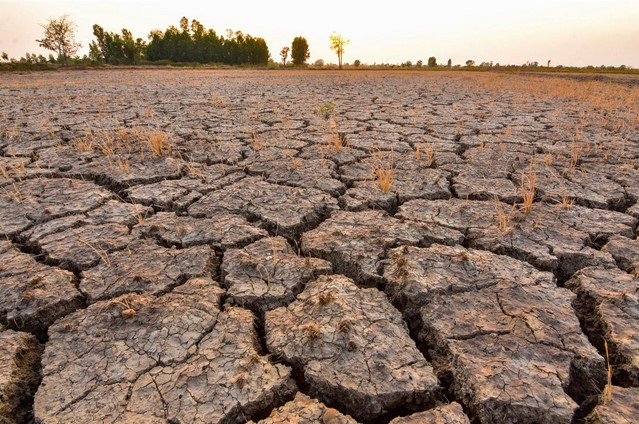Climate change is a global crisis that threatens the health of the planet and seriously affects ecosystems and biodiversity, especially in the most unstable geographical contexts.
Southern Italy is one of these highly critical areas, especially due to the persistence of drought, which in 2024 reached unprecedented levels in the historical series and which, according to the ‘Dry South’ report by Greenpeace and CNR-Ibe, has caused severe or extreme drought in no less than 29% of the territory, according to the Standardised Precipitation Index (SPI). The most critical situations were recorded in Apulia, Basilicata, Calabria, Sicily and Sardinia.
The study highlighted that although problems and adverse events caused by drought are partly foreseeable thanks to the analysis of climate data, they are only addressed when the emergency is already underway. The low capacity for prevention and land management corresponds to an increasing risk of desertification.
To try to better understand the phenomenon, we turn to the CMCC (Euro-Mediterranean Climate Change Centre), an independent and authoritative research institute that develops studies and models on the climate system and its interactions with society, promoting adaptation and mitigation policies based on sound science. The Centre is based in Lecce (Puglia, Italy), but operates internationally, fostering dialogue between scientists, policy makers and the general public, encouraging interdisciplinary collaboration and ensuring the free dissemination of its research results, respecting transparency and integrity.
The CMCC referred us to Dr Monia Santini, who directs the Institute for Climate Resilience at the Euro-Mediterranean Climate Change Centre Foundation and who, through her studies on earth sciences and terrestrial ecosystem dynamics, has contributed to international research on the interactions between water resources, ecosystem components and climate.

To begin with, we asked Dr Santini to explain whether and how climate change affects the availability of water resources in southern Italy, and whether there are areas at risk of desertification.
The Italian peninsula is located in the Mediterranean basin, which is an area at risk of soil degradation to the point of desertification. Here we must first distinguish between the two terms: land degradation indicates when land starts to lose productivity due to both climatic factors and factors related to human activities. The term desertification is used when an already degraded territory, such as an arid or semi-arid area, totally loses productivity; therefore, when the situation becomes irreversible.
Approximately 1/5 of the Italian territory is affected by the phenomenon of soil degradation. In the south, Sardinia, Sicily, Apulia and Basilicata, and to a lesser extent Calabria, are particularly at risk. The phenomenon is very complex and is not only related to the lack of rainfall. When there is a lack of moisture in the soil to support vegetation, it means that we have gone from agro-ecological drought to what is called meteorological drought (lack of rain) and then hydrological drought, i.e. when there is a lack of water in surface and groundwater bodies.
These water bodies in turn have very different dynamics over time: surface water bodies react more quickly to a lack of rainfall, groundwater bodies more slowly.
In this context of the global climate crisis, what can be the collective effort to adopt sustainable solutions to preserve ecosystems and biodiversity?
For our part, we at the CMCC are mainly concerned with modelling and collecting a lot of data needed to validate the models. When looking at desertification issues, it is very important to look at the qualitative aspects and not just the quantitative ones. When we think of land degradation, we immediately relate it to water scarcity. But in reality, the qualitative aspects of the resource are also important, and it is recognised that agriculture is among the causes of contamination of both surface and groundwater aquifers. It plays a very important role because with the use of fertilisers, the use of pesticides, some land management activities for agriculture obviously endanger water resources. So, it’s not just a question of lack of water, it’s also a question of water not having the right qualities to be used. Incidentally, I come back to climate change: what we are seeing is an intensification, a greater frequency, of extreme phenomena and, above all, of the alternation between extreme phenomena of low water availability, i.e. drought, and the opposite phenomena of torrential rains and floods. Well, when these two extremes alternate more closely and therefore there is no normal period between them, the water resource can be greatly affected because when there is little water there is a higher concentration of nutrients and chemical elements, so when flooding occurs, and therefore heavy rains, there can be a proliferation of algae that makes the water no longer usable, or pollutants can spread uncontrollably.
What can be done?
Politics and science need to talk to each other more. In December last year, the National Climate Change Adaptation Plan was adopted, which contains various measures for water resources; many are practical, such as the construction of dykes and flood protection. Others are nature-based, that is, solutions that aim to restore the water cycle by taking advantage of ecosystem functions. Finally, there are information dissemination and awareness-raising initiatives to protect water resources.



